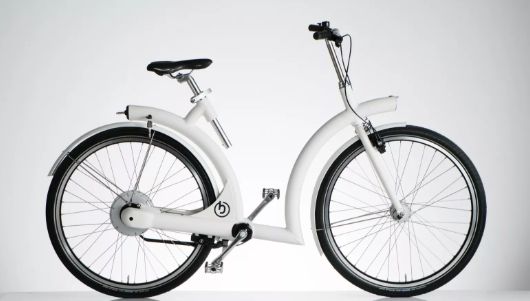Byar Volta Is a Shaft-Driven E-Bike That Might Never Need Charging
Byar Volta Is a Shaft-Driven E-Bike

Byar Volta Is a Shaft-Driven E-Bike: Image Source
When we think of a “bicycle”, most of us believe in a diamond frame handlebar, wheels, and pedals. In an attempt to move the contraction forward, this loop transforms the power of the leg muscles into mechanical force. For nearly 150 years, that was accurate. A new bike from a small Netherlands company I researched hopes to change your concept.
It is Byar Bicycle’s first e-bike. Your first things are his sweeping, gradual design and flying saddle. Also, it is chainless. It is because the motorcycle is shaft-driven. The electrical assistance is also provided by a large rear hub that cautiously hides a 250W engine, dashboard, Bluetooth and GPS radio, velocity, and curve and pace assessment instruments and a 160Wh battery that can be automatically recharged.
The Byar Volta is a town bicycle for towns that favor convenience rather than velocity. It is for a casual two-wheel-driver who wants to stand out deep enough from the crowd, absorbing its starting cost of 3500 euros, or nearly 4000 dollars.
For decades, I have tested the Volta prototype. I was provided by Renier Meuwissen, Byar’s owner, and Bicycle Company. My ride is a model of a venture that has never begun in the city. The 2019 Volta, sold in the Netherlands two months previously, has been amended to integrate the 2018 prototype classes. As such, I can’t offer an evaluation. I have great ideas about the prototype I have been driving, which ought to continue up to 2019.
But let’s talk first about the advantages of the belt and everything-engines. Shaft-driven bikes were around for a century, but they won through different gears, chains, and derailleurs through their ability to translate the muscle power more efficiently. However, advances in internal hub gearing, together with the growth of low-cost electric motors and batteries mostly negate these benefits, particularly in flat towns. While belt engines/shaft drives are complicated and expensive to produce, the final product is smooth, less damaging, and quiet and no maintenance cost for whole life on battery.
The ingenious Bike+ engine from Zehus used by Byar. The Italian company produces everything from boutique brands to bicycle giants like Sparta in motors made by dozens of companies. Zehus motors call on manufacturers to electrify their bicycles without being challenging to become DC power experts, to operate wires, to build an application or to compromise their designs with throttle batteries that can be mounted on chassis or concealed inside congested tubes.
To activate the bike, you must have a minimum walk of 5 km / h (approximately 3 miles per hour). The Bitride Companion device connects to the Bike+ engine automatically via Bluetooth at speed. You have to reach a distance of at least 10 km / h to switch on engine help and then cycle home for three cycles. The same pedal movement also slows the bike by regenerative braking. The longer you pedal, the more quickly the motorcycle is transformed into energy for recharging. The cooling process is very progressive. Volta’s hydraulic brakes are fitted to prevent.
Seven distinct types of energy are available, including Turbo, E-bike, Range 1, Range 2, Range 3 and Bike+. Turbo is a complete pedal holder method up to 35 kilometers. The distance from a single charge to Range 3 mode extends to 90 km. You never have to recharge your battery with Bike+ promises. It mainly regenerative mode still provides pedal power on the paths or at low speeds. However, it steals your power legs on more quiet roads or pills downhill battery speed.
Bike+ is taxing, but not in my limited exam. Yes, you can touch extra strength once you have reached speed, but it is unimportant if I must believe, it will be five times harder. To deliver a high rate of electrical breakage assistance or an angle, Bike+ motor is still smart enough.
The single-speed gear rate of the bicycle can quickly overwhelm turbo mode. My legs could hardly hold up once I was about 22 km / h. It was the most comfortable to ride at rates from 18 km / h to 20 km / h. It is all right with visiting and vehicle in the busy middle of Amsterdam, but it is rapid for everyone on a shorter trip outside the city. The motor Bike+ stops at a maximum of 25 km / h (16 mph).
Reich 1 was my choice because the best mix of energy assistance and regeneration to enhance battery life was available when necessary. It is a lot of choices, honestly, with only a small variety of methods in the production of energy and regenerative capacity. However, there are far too few options. Fortunately, you can put it and ignore it once you identify your preferred method. It defaults to your previous mode the next time you wake up the bike.
Volta aluminum-framed is steady at 22.5 kg/50 pounds, but much more massive than the model I’m using for 41 kg/90 pounds. But it wasn’t substantial, it felt like a many Netherlands city bike. The powered engine, which begins at the beginning of a living stage after about half a century, naturally balances the weight.
Read Next: Test Flight Of Flying Car Successfully Conducted By Japanese Firm NEC



